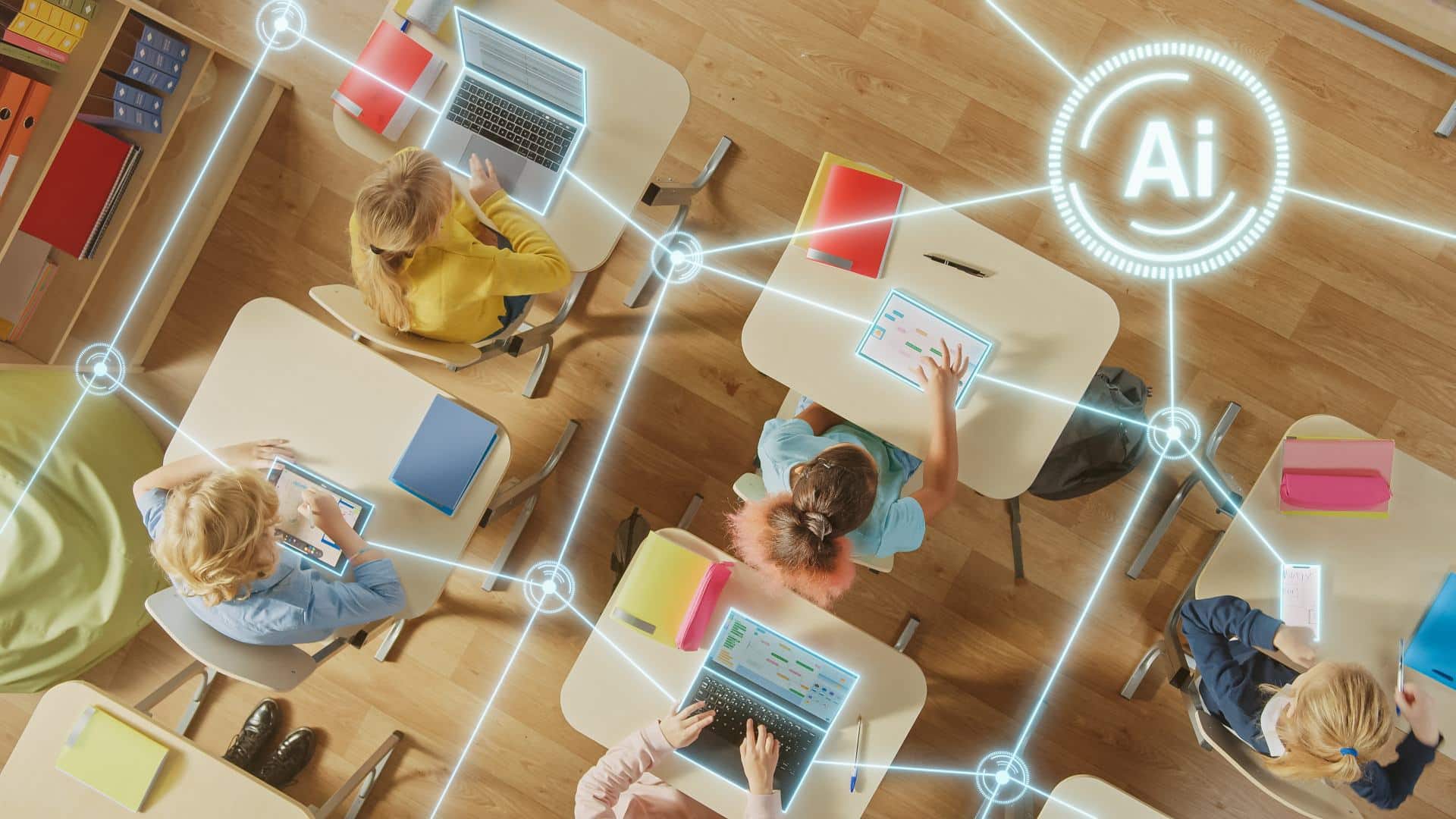Recently reading Ajay Agrawal, Joshua Gans, and Avi Goldfarb’s book Power and Prediction: The Disruptive Economics of Artificial Intelligence had me nodding in agreement when they talked about the potential impact of AI on education.
No, they didn’t blindly cheerlead its impact. Instead, they offered this:
“As a point solution, this AI could enhance learning in the existing school system to some extent, although the impact would be limited because once a student completes their grade’s age-based curriculum, they would be done for the year or need to continue any further learning with limited teacher support because teachers are often trained for a specific level (e.g., middle-school math). In the existing system, this problem would become increasingly severe in later grades as the spread between faster and slower learners in a subject area grows over time.”
The line reminded me of our observation in Disrupting Class that the vast majority of education technology had disappointed because it had been “crammed” into the existing system—in effect, implemented as a point solution.
As Clayton Christensen, Curtis Johnson, and I wrote at the time:
“The billions schools have spent on computers have had little effect on how teachers teach and students learn—save possibly to increase costs and draw resources away from other school priorities. They haven’t brought schools much closer to realizing the promising path of building students’ intrinsic motivation… The reason for this disappointing result is that the way schools have employed computers has been perfectly predictable, perfectly logical—and, if transforming learning is the goal, perfectly wrong. … Schools have crammed them into classrooms to sustain and marginally improve the way they already teach and run their schools, just as most organizations do when they attempt to implement innovations, including computers.”
We caught a lot of flak from those in the edtech community at the time who said we weren’t acknowledging the big contributions they were making. It led to a deeper line of research where we looked at blended-learning models—and we observed that education technology could make a contribution, but likely only an incremental one so long as those models sustained the traditional classroom system, but didn’t disrupt it.
Indeed, in 2019, two research studies about New Classroom’s Teach to One proved the point.
Here’s what I wrote about the studies at the time, but the basic point was this: although Teach to One was designed to meet students wherever they were in math, one study—a rigorous, federally-funded evaluation by Teachers College and the Consortium for Policy Research in Education (CPRE)—found no positive or negative impact from the program, which was unsurprising because the schools didn’t implement the program as designed or uniformly because they were more concerned with covering grade-level concepts rather than meeting students where they were in their learning. In a second study, meanwhile, that the Bill and Melinda Gates Foundation funded and MarGrady Research conducted, the report found that students enrolled continuously in Teach to One saw 23% greater gains than students nationally, and that students in schools with accountability systems aligned fully to the program’s intent—meaning not to one’s grade level—saw gains that were 53% above the national average.
In other words, when the education technology was implemented in classrooms that met the students’ needs, students succeeded. When it was implemented in classrooms focused on delivering grade-level content regardless of student mastery, it didn’t produce much measurable impact.
All of which describes the folly of folks like Jonathan Haidt, who love to point out that studies consistently show that education technology disappoints. Well, of course it does—because most of it is implemented as a point solution (read: crammed!) into traditional classrooms that limit and bound its effectiveness.
The point is that the model—or system—must change. Technology is merely an enabler.
As Agrawal, Gans, and Goldfarb also wrote:
“Imagine, instead, a system where students progress through school as a class (their physical and social development is paced by biology), but many different tutors and teachers come and go to support different students, depending on their individual learning needs. The tutors and teachers that students work with are independent of the students’ ages but are instead determined by the nature of their questions and ability in a subject area. The impact of the AI would be much greater in this new system compared to the impact of the same AI in the existing system because each student could receive an education personalized to their learning needs…”
They further write:
“In other words, the age-based curriculum rule is the glue that holds together much of the modern education system, and so an AI that personalizes learning content can only provide limited benefit in that system. The primary challenge for unleashing the potential of a personalized education AI is not building the prediction model but unsticking education from the age-based curriculum rule that currently glues the system together.”
Almost exactly what we wrote in 2008 in Disrupting Class.
And yet we’ve seen far too much cramming and point solutions, not new models that transcend the system.
Thankfully there are Education Savings Accounts (ESAs) that are unleashing a wave of education entrepreneurship in the form of microschools and more—see, for example, Acton Academy, the 2 Hour Learning Model and Alpha Schools, Kaipod Learning, Primer, Wildflower Montessori, OpenEd, Prenda Learning, and more—as well as the good folks at New Classrooms helping places like North Dakota and Virginia pass legislation to advance personalized, competency-based learning.
But so long as we keep implementing AI in the traditional classroom, I’m fairly confident the impact will be minimal. In other words, don’t bet on AI transforming traditional schools.


